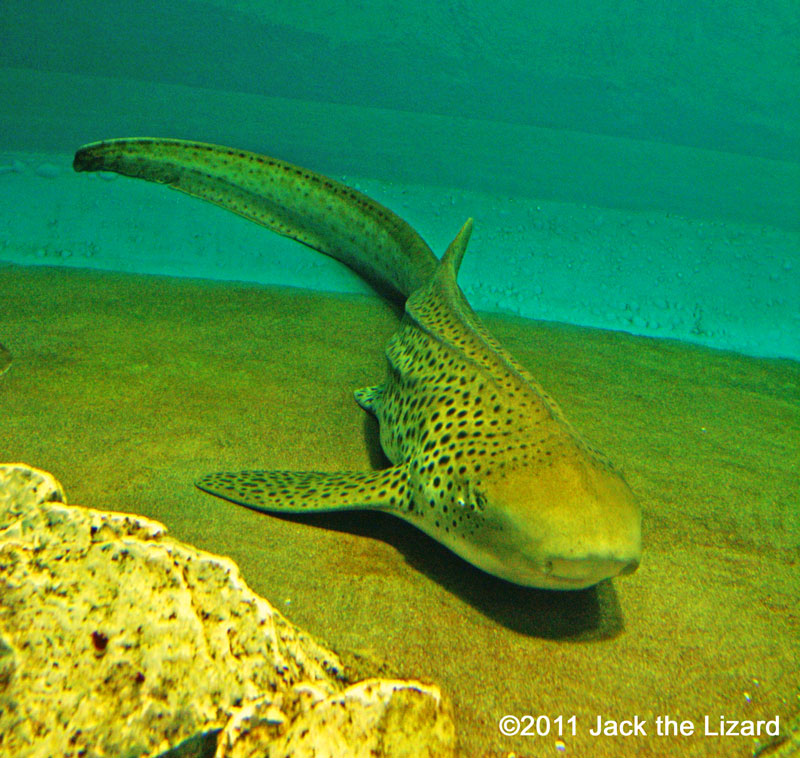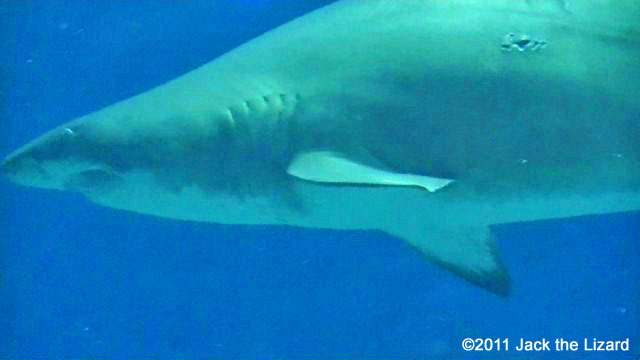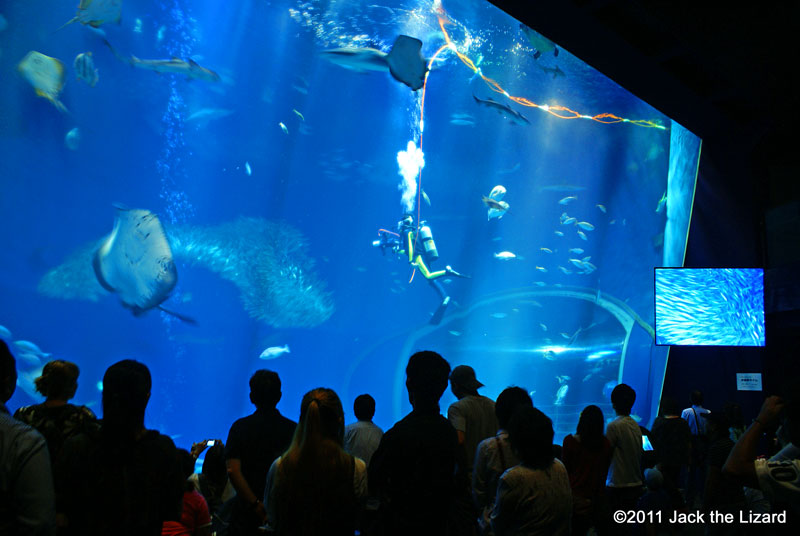
|
Ibaraki Prefectural Oarai Aquarium |
|
|
Understanding Shark
Ibaraki Prefectural Oarai Aquarium
|

The aquarium expanded its facility 10 years ago. Main attraction is not only shark but ocean sunfish.
|
why sharks?
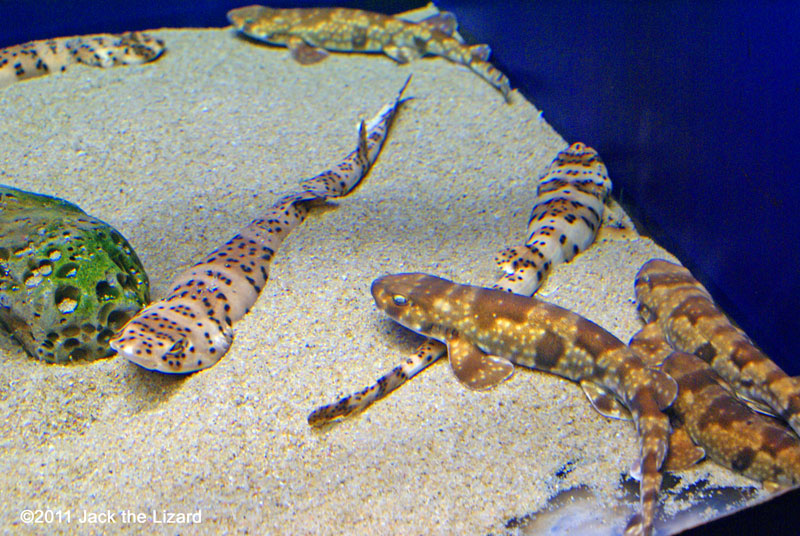
Cloudy catshark live in the coasts of China, Korea and Japan. The size is about 20in (50cm) long.
|
Many people visit Oarai aquarium to see sharks in which the aquarium specialize, but why sharks? Fishery is one of the major industries in Oarai town. Cold current, Oyashio runs into warm current, Kuroshio offshore Oarai. This event leads an abundance of plankton that attracts all kinds of fish such as halibut, mackerel, sardine and sharks. With local fisherman’s help the aquarium have been collecting several sorts of sharks and breeding them for over 10years. Most of sharks that the aquarium rears and breeds live in the bottom of sea. Those sharks are scarcely seen by people because they usually hide behind rocks or stay underneath sand. So it is good opportunity for visitor to see those sharks at the aquarium. |

Bowmouth guitarfish is one of the featured fish in the aquarium. Although the tale looks like shark, this fish belongs to the family of ray. They inhabit tropical waters of the Indo-Pacific Ocean. Some think that the spikes of its head are considered as defensive equipment. By the way the ray families have their gills on their belly while the sharks have them on their side.
|
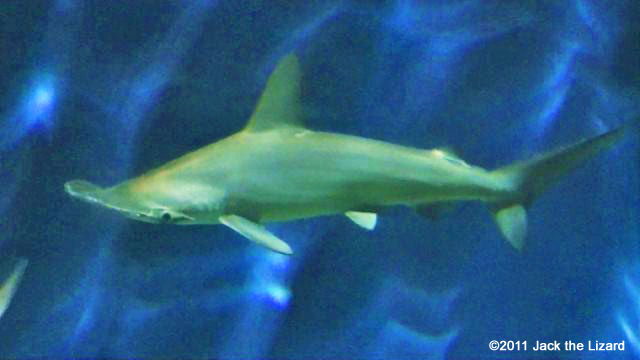
Scalloped hammerheads live in warm waters of the world oceans. Smooth hammerheads and great hammerhead also inhabit around Japan.
|
Not so many sharks are bad boys
Now the aquarium has 53 species of sharks which are from domestic sea and foreign. The number is outstanding not only in Japan but even in the world. The aquarium tries to understand the ecology of each sharks and succeed in breeding. Despite of dangerous image of sharks such as great white sharks and tiger sharks, most of sharks are docile. They are also popular among people, but few things are known of their breeding and growth. So the aquarium goes into partnership with universities and other research organization to study sharks. Since almost all shark population in the world is declining, that is the reason why the aquarium collects sharks from both domestic and foreign. Rare one is from Nagasaki, southern Japan and from South Africa. The aquarium is trying to save those unique sharks. |

A new born of Brown shyshark.
|

The habitat of Brown shyshark is limited area along the coast of South Africa. The length is about 28in (70cm). The aquarium successfully breeds this shark.
|
Each individual has their own personality.
|
“Even within same species each of them has personality, one is rough, another is timid and the other is gentle. You have to observe them every day to see it though.” It is necessary for staffs to know every single shark character, because there is power balance within one species. Staffs should understand the relation between one shark and another to rear sharks, otherwise weak shark may lose their appetite because of stress and have some trouble of its immune system. In that case staff transfer weak one to another tank to recover. Mainly there are two types of sharks, one is bottom dweller and another is active swimmer. For bottom one staffs sometimes change design of rocks in the tank to keep healthy environment. For swimmer such as hammerhead which is very sensitive to new environment staffs swim along with it when it is transferred. The other fish with hammerhead in same tank are also carefully chosen. |
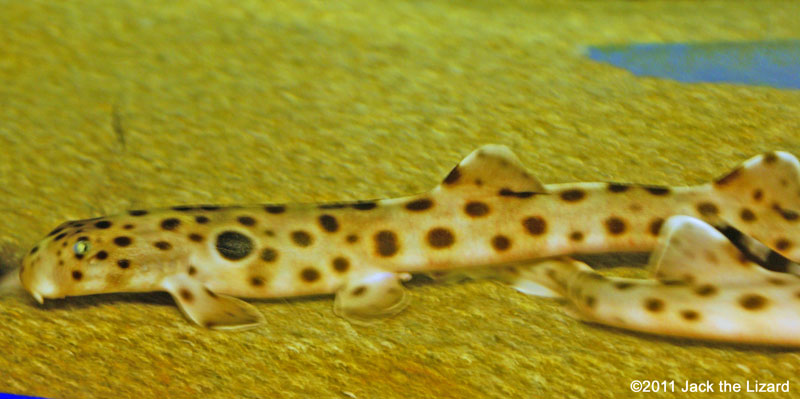
Epaulette sharks are small sharks which inhabit the Great Barrier Reef in Australia. These sharks are also born in the aquarium.
|

In spite of their fearsome appearance Sand Tiger sharks are gentle and rarely attack human. They can be found in warm water of world oceans. The length is about 10ft (3m).
|
Female endurance
|
Principally sharks have two ways of breeding, laying eggs or giving birth babies. In captivity it is very difficult for those deliver babies to breed, because they usually bear just two babies at a time. However the aquarium has succeeded in breeding of some rare species of sharks. Naturally the condition of females is the most important during the mating season, but sometimes a female is bitten by a male and gets injured. The shark coupling is very rough. In natural environment females can escape from violent males, but in the tank they have nowhere to go. Female and male should be separated just in time. The diets of sharks are also important, because females need nutritious food to make eggs during their pregnancy. Moreover some sharks mate once a year but another do all seasons. Staff also should consider congeniality between a female and a male. One of the most difficult species to breed is sand tiger shark. |
|
Shibagaki has been taking care of sand tigers for 12 years and having consideration for them. “Just few sand tigers in captivity succeeded in breeding. They mate once a year and unlike other species female fight back while they are mating. So both female and male always have some scars on their body during the season. They do not eat much or even vomit when they are not in good shape. We must keep eye on those signs.” said Shibagaki. Sand Tigers are also over hunted around the world and almost terminated in some region. Unfortunately they were taken their lives because their appearance. By-catch is still one of the serious threats they are facing. |
|
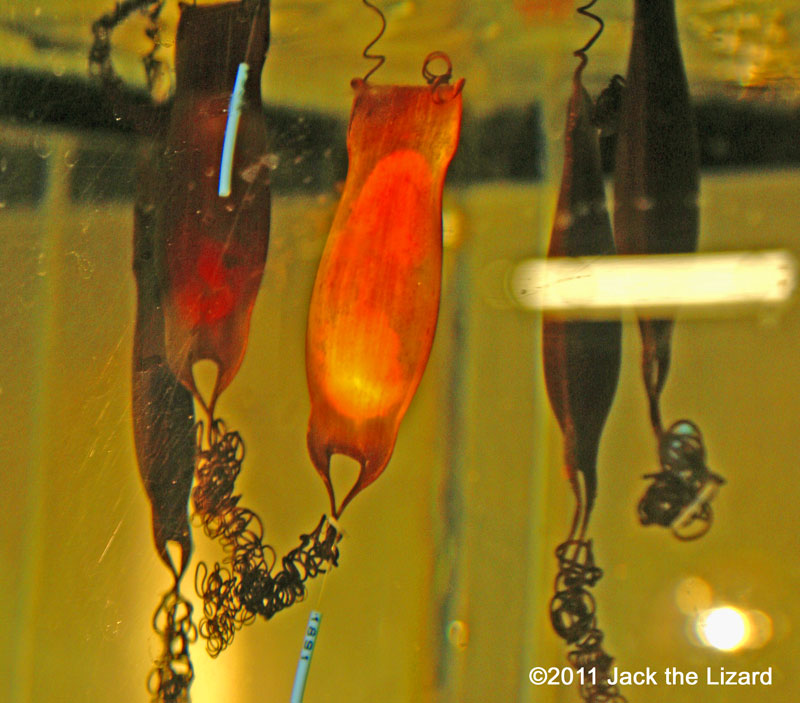
Eggs of Brown shyshark. Baby sharks can be seen through eggs. Since the baby respires through the four corners of an egg, the egg must be suspended.
|

Juveniles of whitespotted bamboo shark. They live in coral area of Pacific Ocean.
|
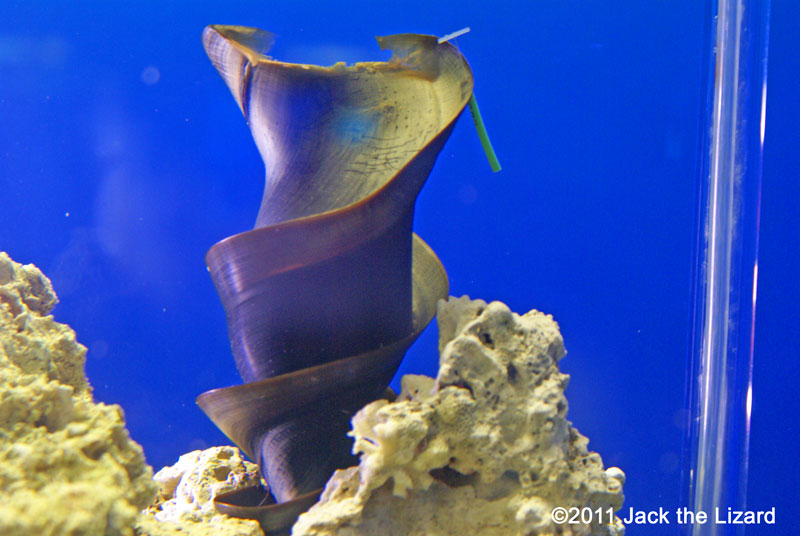
An egg of Japanese bullhead shark. Drill shape egg sticks in a gap in rocks or coral not to be washed away by current.
|
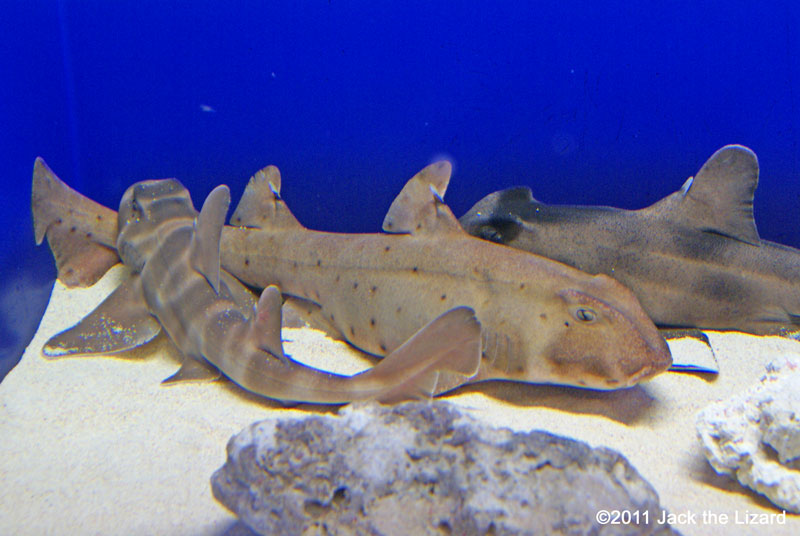
Japanese bullhead sharks (front) inhabit south of Hokkaido.
The habitats of Horn sharks (middle) are the coast and the bay of California. Crested bullhead sharks live in east coast of Australia. |
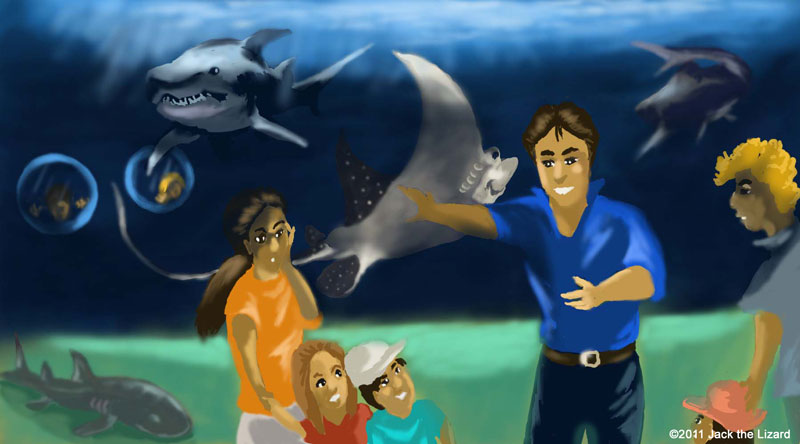
Shibagaki often explains ecology of sharks to visitors.
Sharks mainly eat sardine, mackerel and squid in aquarium. Since sharks breed babies or eggs hatch out at night to avoid predator even though in the aquarium, visitors hardly ever seen those.
|
Watch the ocean through the eyes of sharks.
Together with some species of shark a sea turtle and several fishes such as rays, sardines and moray eel swim in the tank. Some sharks approach the other fish with curiosity, but they do not cause any troubles. On the other hand some sharks are very shy with the other fish. It is impossible to recreate natural environment, but visitor could imagine their habitat environment. “Sharks are surely popular among visitor, but we also want to show the environment that sharks live in to our visitor. I think through that experience people may feel closer to sea around us” said Shibagaki. |
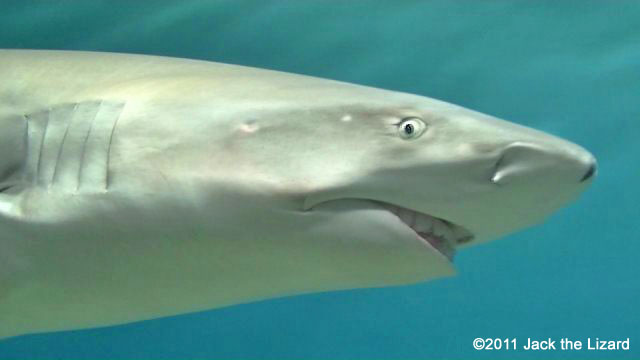
Sharptooth lemon sharks dwell in warm water of Pacific and Indian Ocean. They have strong curiosity.
|

Zebra bullhead sharks are found in shallow water of Japan, Korea, China, Southeast Asia and Australia. The size is about 40in (1m).
|

